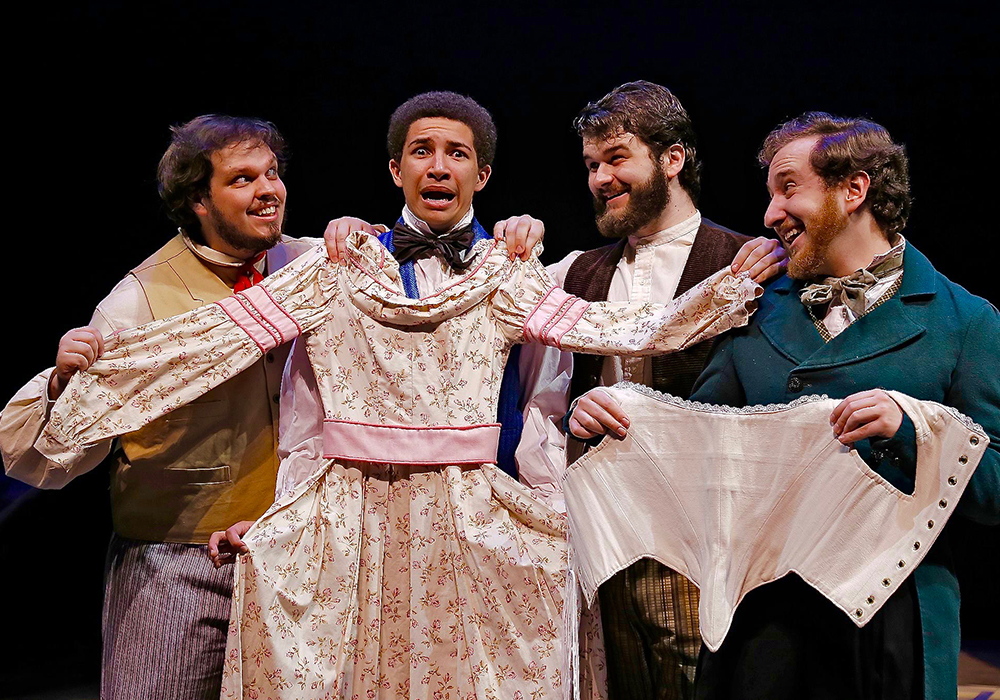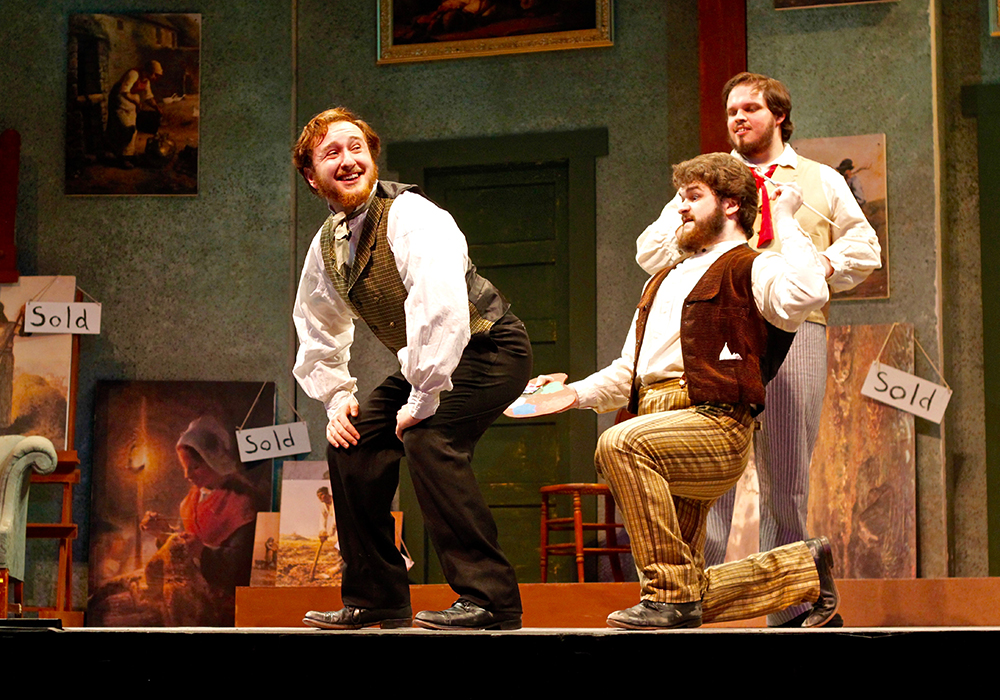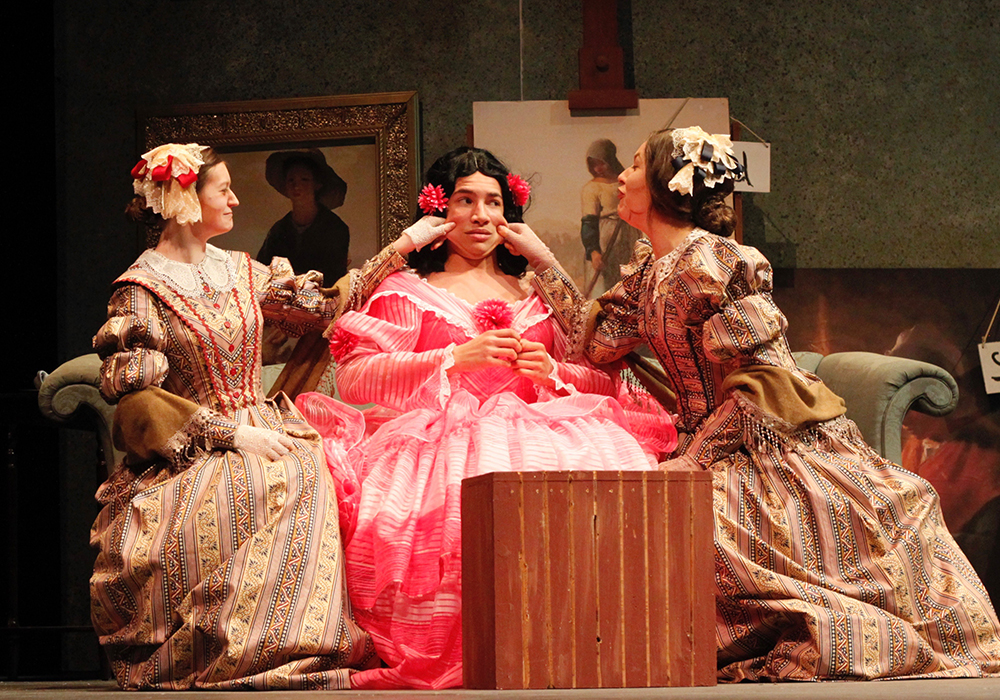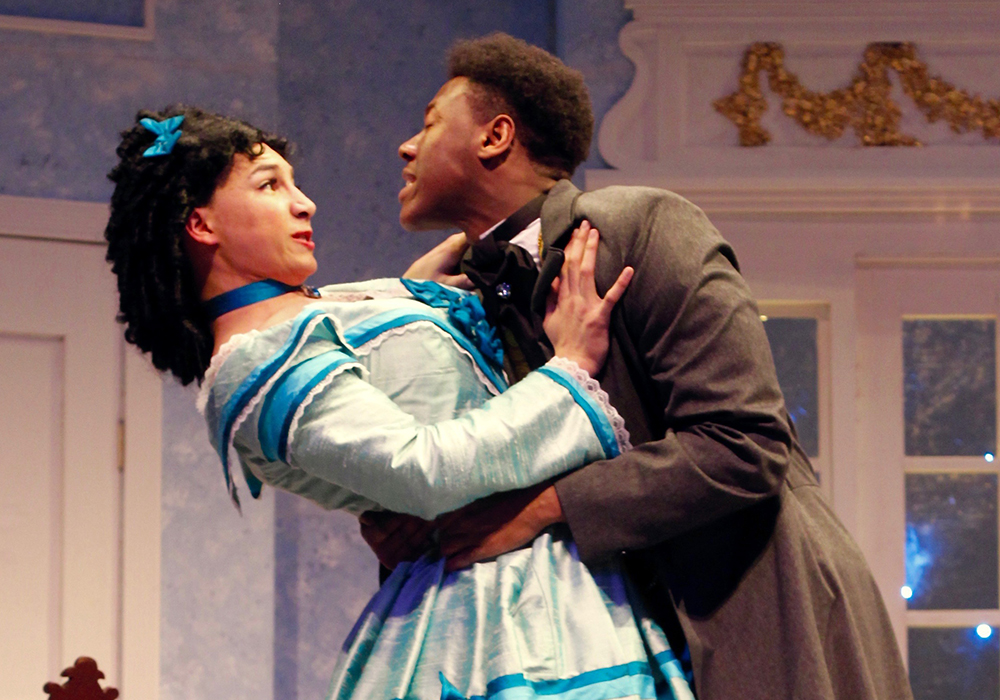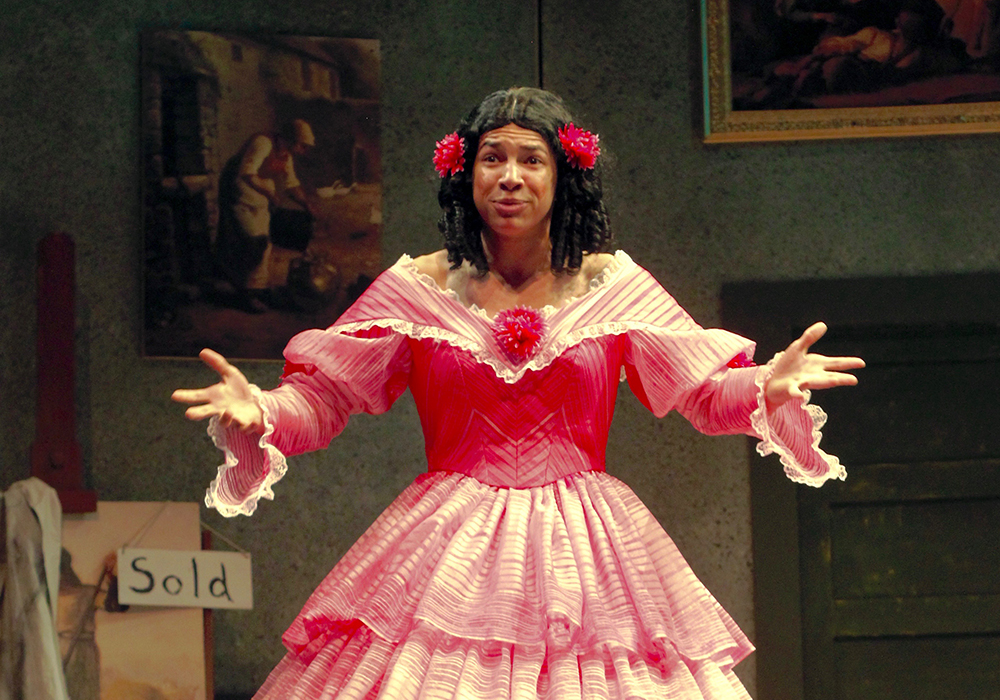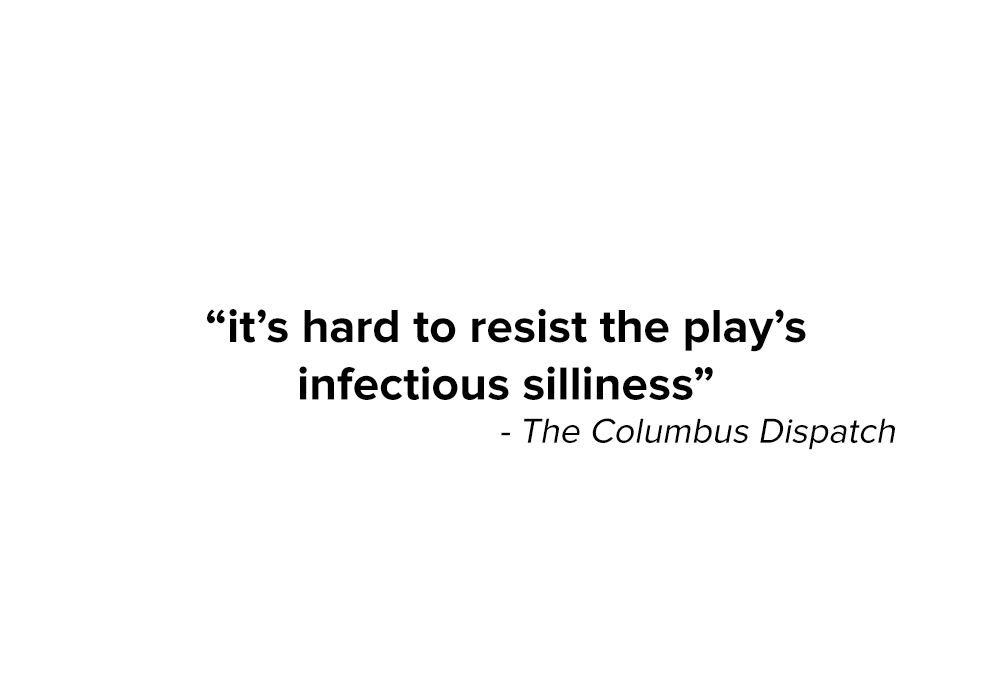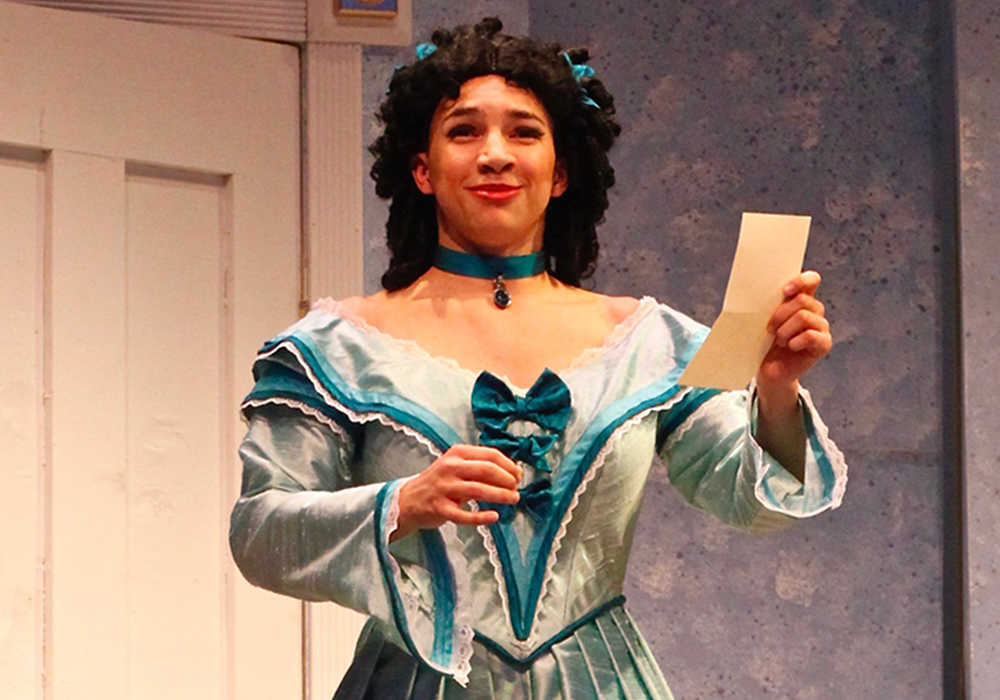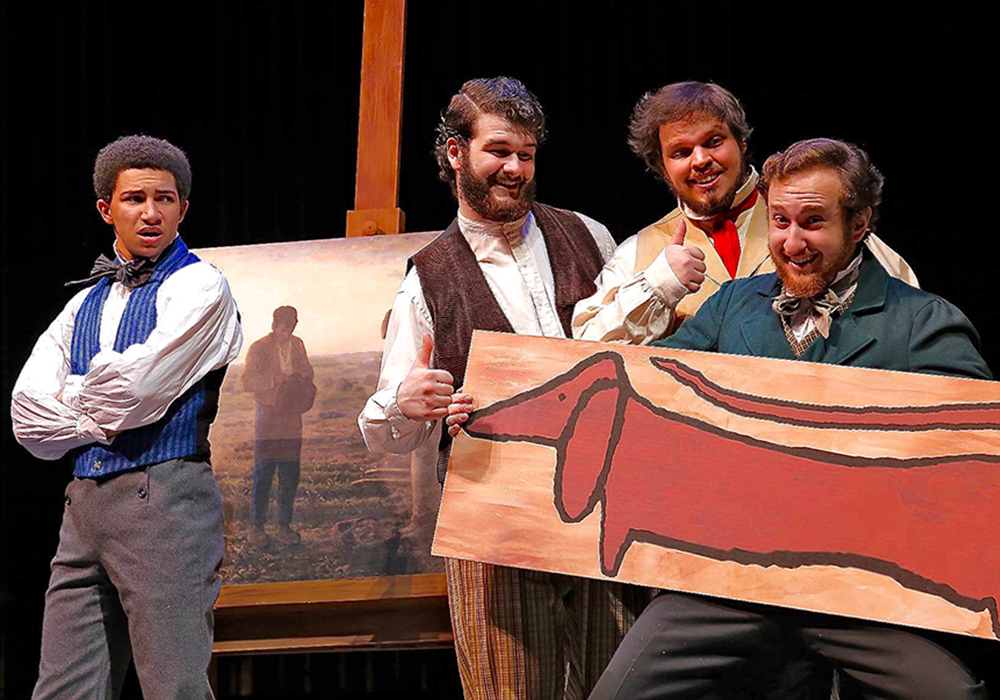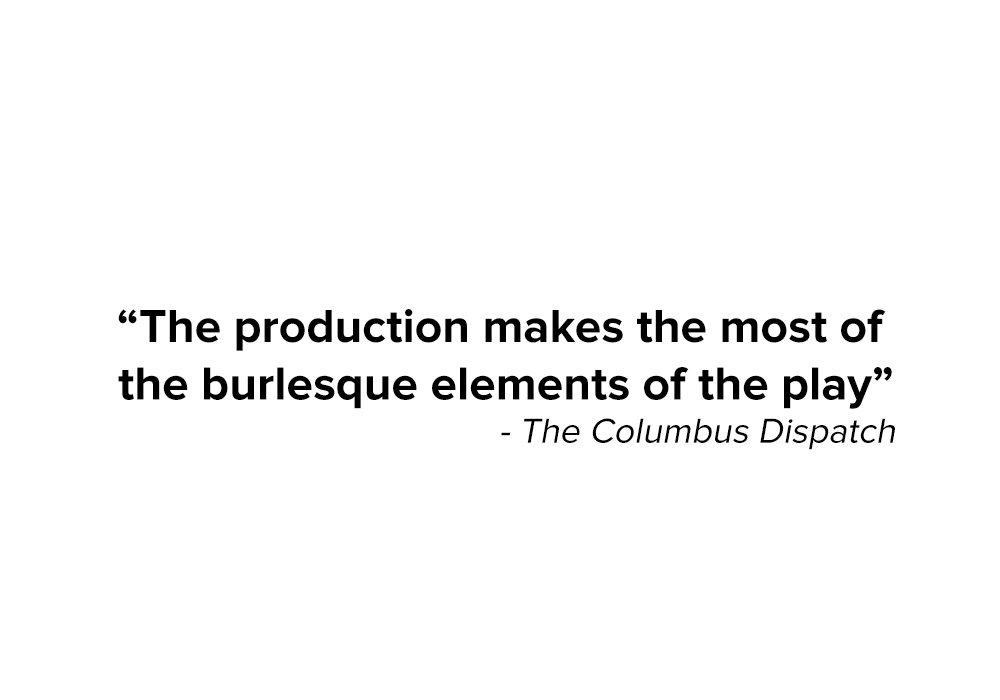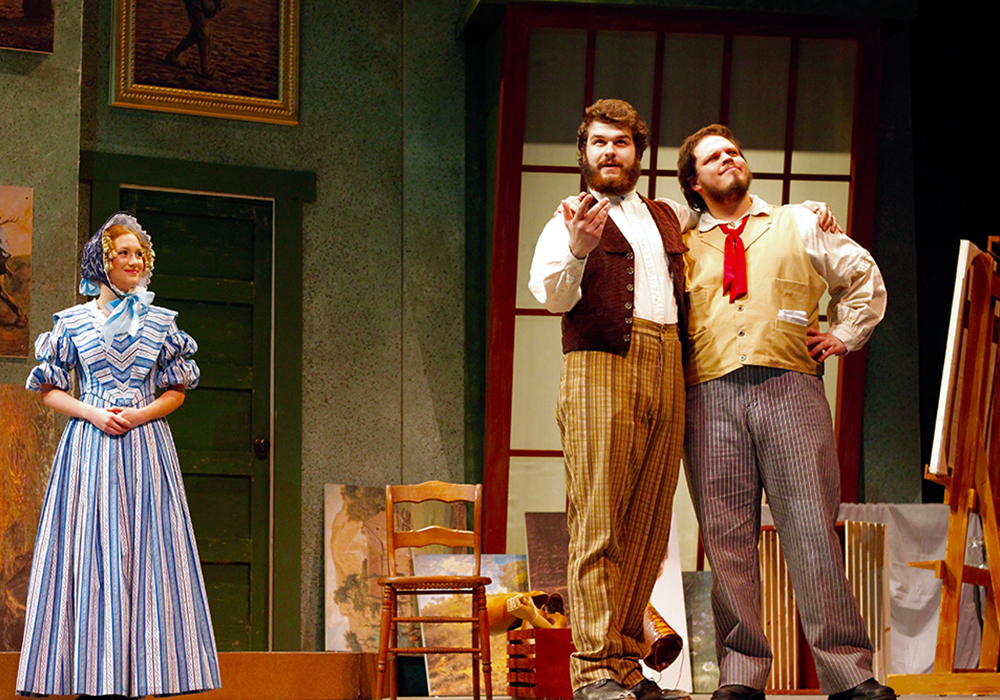Is He Dead?
Otterbein University
The Columbus Dispatch
Is He Dead? has a complicated history. Written by Mark Twain and never performed in his lifetime, it was tightened and sharpened by David Ives for its 2007 Broadway premiere.
The production by Otterbein University makes the most of the burlesque elements of the play. Though it starts slowly, the two-act builds to a crescendo of laughs.
Once Daisy appears, so do the laughs. The previously morose Millet discovers inner reserves of giddiness, as Wood shifts precariously from male to female mannerisms depending on what the situation requires, gradually discovering the pleasures of femininity even as Millet/Daisy gets deeper into trouble.
The supporting characters may be inevitably one-dimensional, but they make the most of those singular dimensions. DiMario is plucky as the virginal ingénue, Sally Clark and Tristan Gillia make a fine comedy team as two twittering widows enamored of Millet’s work, and Ben Folts moves chameleon-like through a host of roles, including an enthusiastic French detective and the pompous Brit whose desire for the work of dead artists inspires the scheme.
Director Mark Mineart creates a crisply stylized world, with just enough exaggeration to poke fun at the melodrama.
Even with Ives’ tweaking, this is not a structurally elegant play. It bounces from one comic moment to the next, often with no logic. But ramshackle though it may be, it’s hard to resist the play’s infectious silliness.
Director's Notes
Re: Is He Dead?
I have been an admirer of Twain both as a writer and a thinker since I first encountered his work in my childhood with Tom Sawyer, Huck Finn, and Injun Joe. I later moved on to other works including A Connecticut Yankee in King Arthur’s Court, The Diary of Adam and Eve, and On the Decay of the Art of Lying.
Is He Dead? was written by Mark Twain in 1898 and was never produced during his lifetime. The script remained dormant until it was ‘rediscovered’ in Berkley’s Bancroft Library in 2002.
Twain’s original script was untenable for a modern production; it was conceived in a now unpopular 3 act format and required a cast of 35 actors. Award-winning playwright David Ives was brought on board to tighten and trim Twain’s script down into something that would be producible as well as attractive to modern audiences. Is He Dead? received it’s first public performance in December of 2009 in New York’s Lyceum Theatre on Broadway.
Ives has done a masterful job as care-taker of Twain’s original vision. All of Mr. Twain’s wit and voice are clearly present in this current incarnation of the text.
Re: The Nature of Farce
Farce (stemming for the French word meaning ‘stuffing’ or ‘padding’) is a particular form of theatrical storytelling that first appeared in the 18th century as short comic sketches inserted as breaks in longer dramatic works, butfarce traces its roots as far back as the Commedia dell’ Arte of the Italian Renaissance.
Farce is meant to be nothing more than entertainment, a theatrical confection, and on it’s surface seems like an easy enough thing; after all, the plots as well as the characters of farce are simple enough, and an entire play and it’s characters can be described in a few short sentences. Really, how difficult can it be to create a confection? Well...I remember the first time I tried to make a soufflé...
As with the making of a soufflé, it is very often the case that the simplest things can be the most difficult to do with excellence. Farce has been described as the most difficult and challenging of all theatrical forms. It is not only immensely physical, it requires a robust size and vigor of performance, a consummate awareness of the audience, impeccable comic-timing, as well as the ability of performers to be surgically precise in the execution of both dialogue and movement night after night after night. Farce is so demanding and difficult that the word farceur was coined to describe those actors who were especially skilled in it.
Having told you all of this, please feel free to forget it. While some appreciate the delicacy of a fine soufflé because of how difficult it is to master, others simply and purely enjoy the taste. Farce is just the same, whether you know how it is made or not, it is meant to be joyful and delicious.
On behalf of the company of Is He Dead? (actors, designers, production teams, stage managers, various stage crews, box office, publicity teams, etc) let me say that we hope you enjoy your time in the theatre with us today. If you do, please know that the credit belongs to the students of the Otterbein Department of Theatre and Dance. If anything displeases you, please know those mistakes are entirely mine. Thank you for coming.
You may also view a photo gallery and video clips associated with this production.
